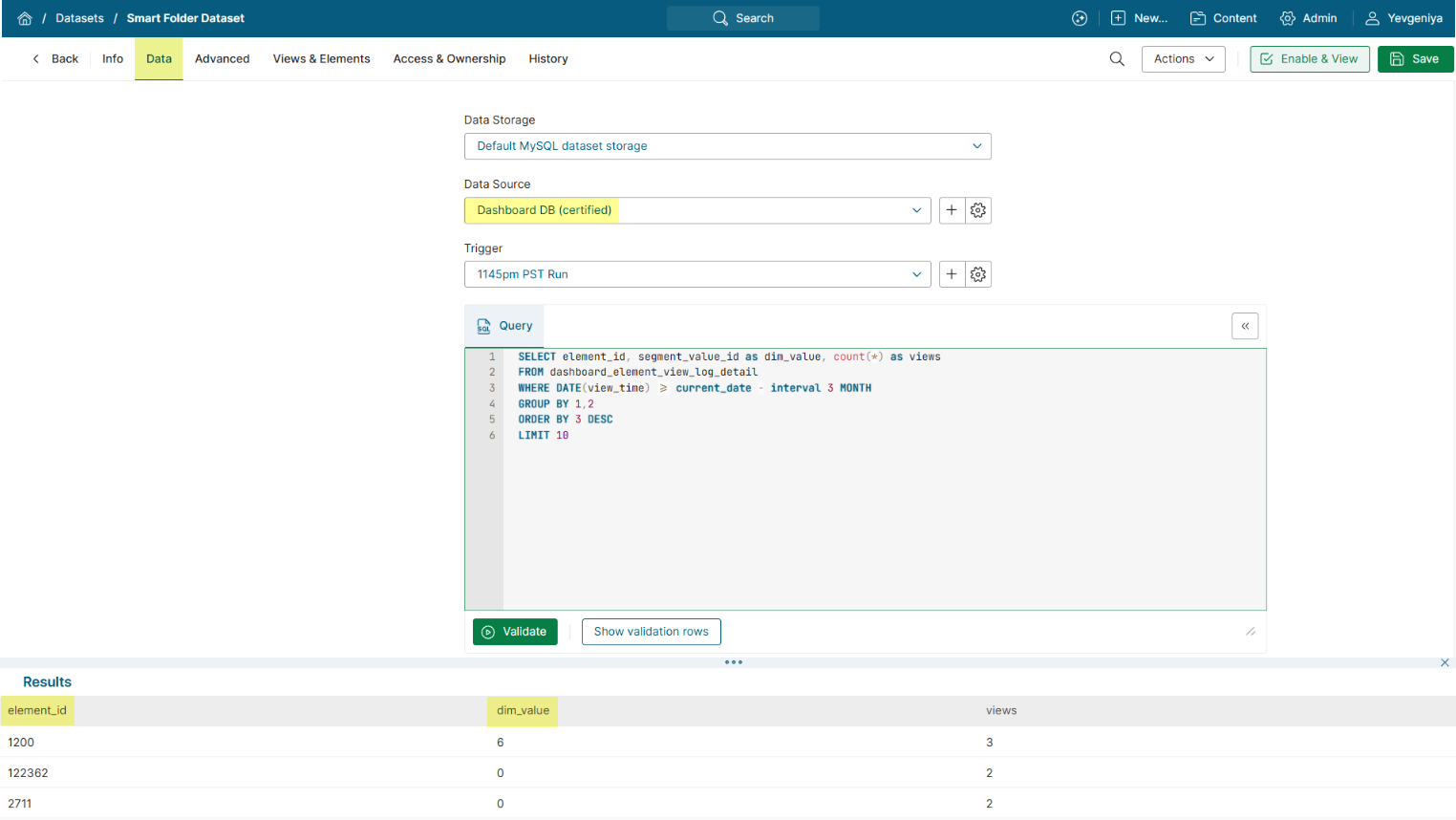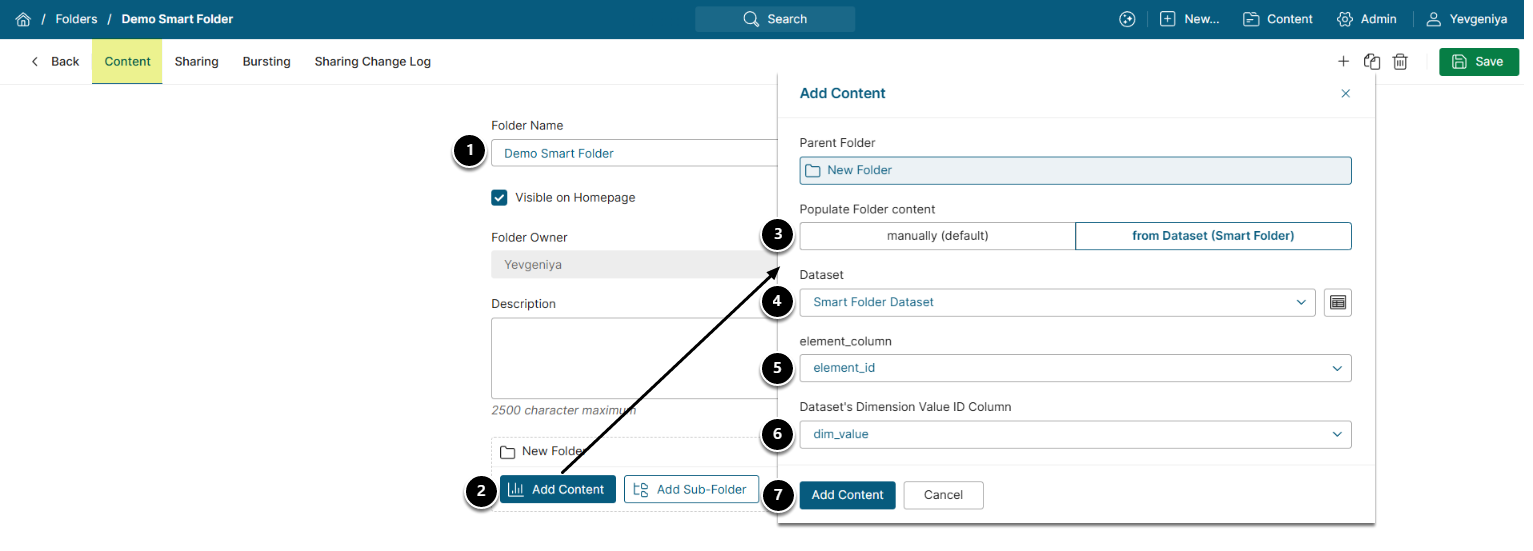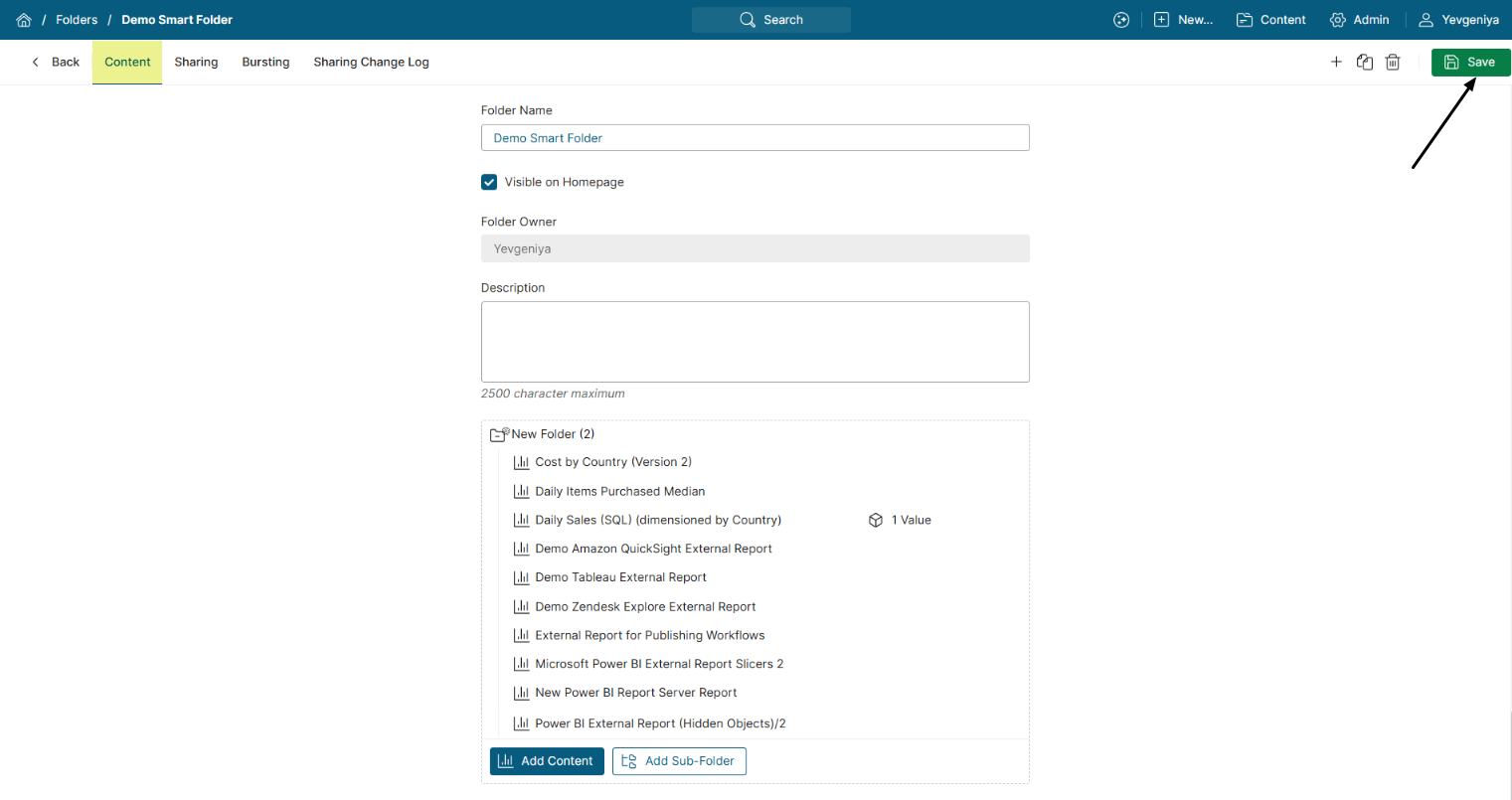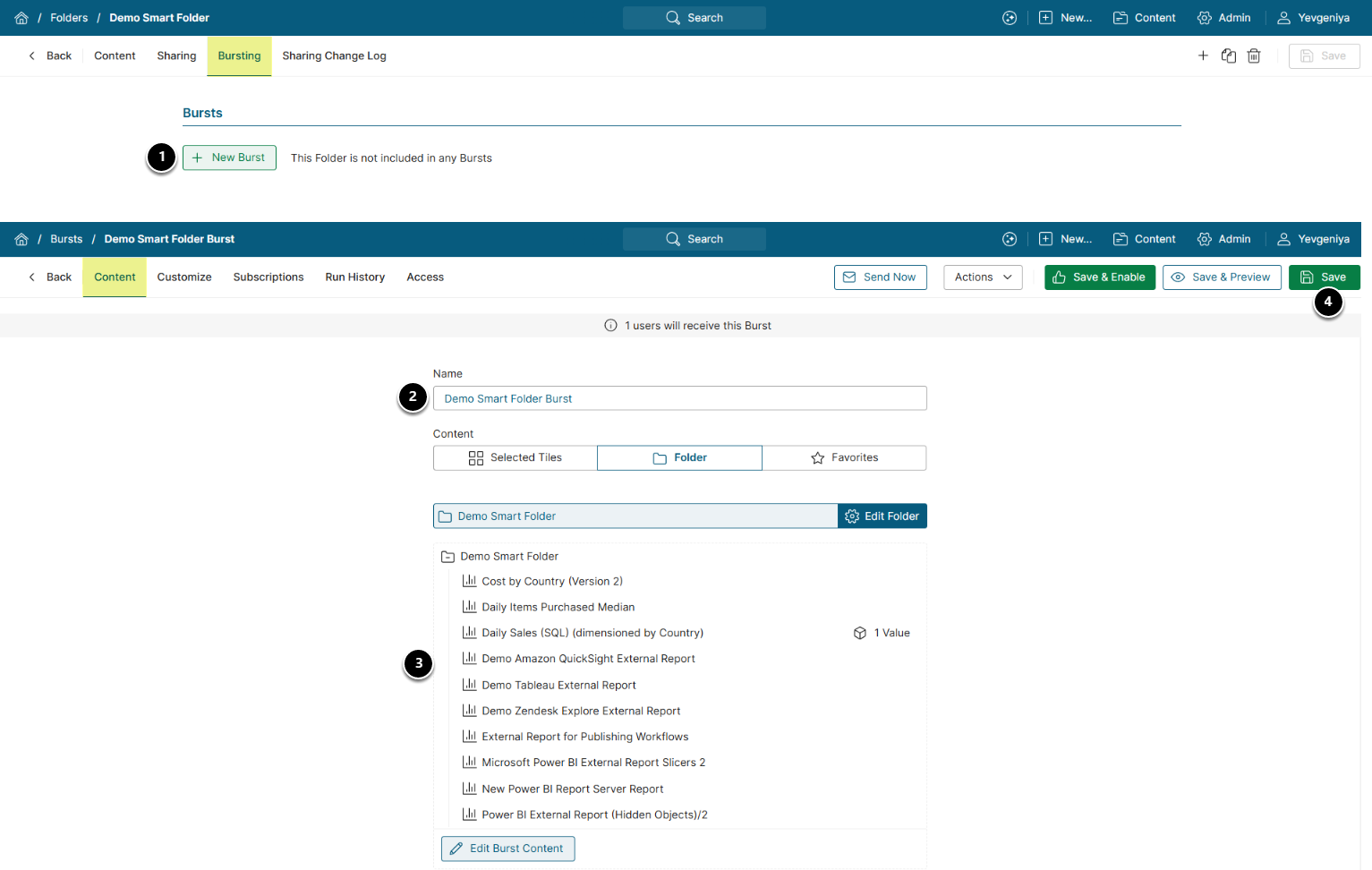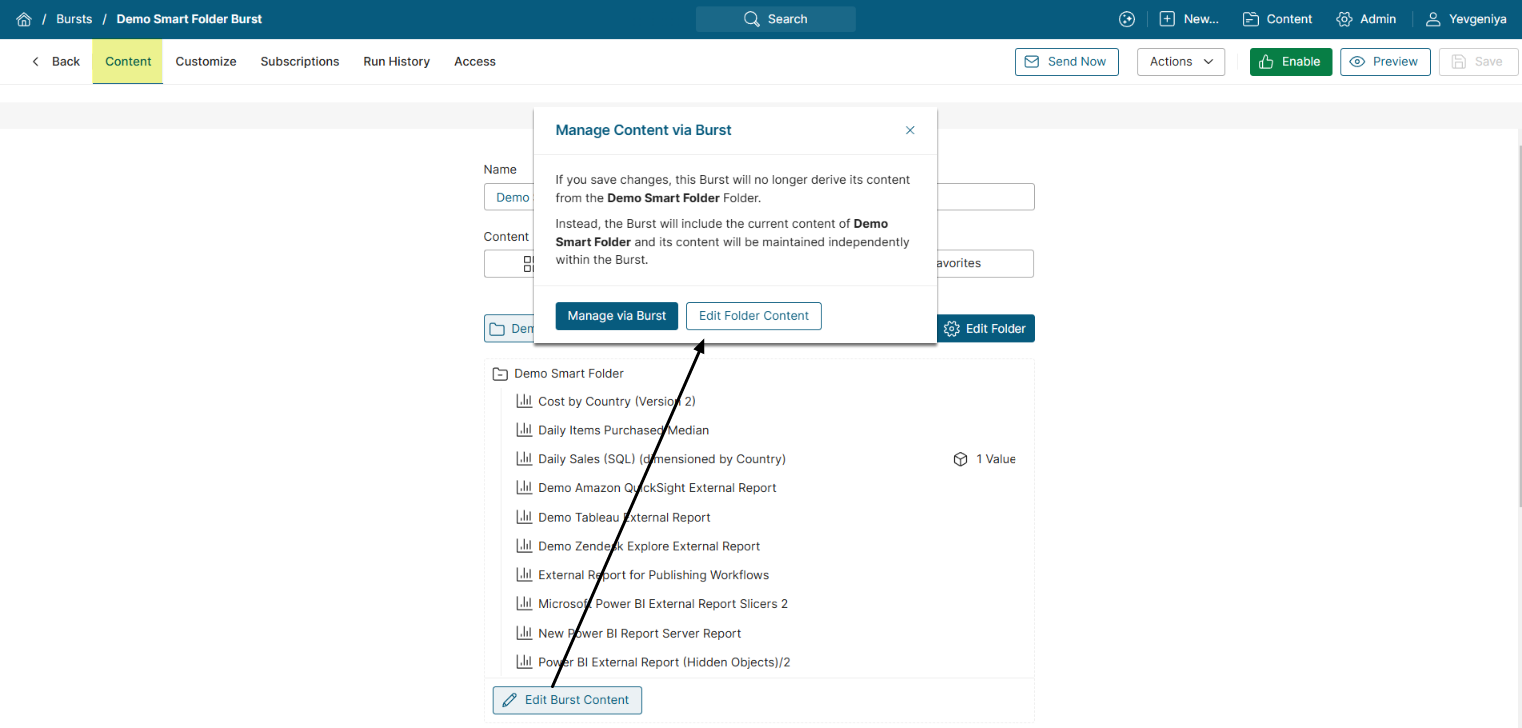Smart Folder is a Folder that can be populated with Elements by using a Dataset that contains data with such columns:
- Element ID and, optionally,
- Dimension Value(s)' ID
PURPOSE:
- Automatically populate Folders with a large number of Elements instead of adding each Element manually.
- Allow the Smart Folder's content to be controlled by the Dataset's values.
- Prevent Users with no access to the source Dataset from modifying the contents of the associated Folder.
PREREQUISITES:
- The ENABLE_SMART_FOLDERS Configuration Variable must be set to "Y"
Feature Overview
To populate the list of Elements for the Smart Folder you can use a SQL command in the Dataset. The query output should contain the Element ID and Dimension Value ID of the tiles to be included in the Folder.
- On the Homepage, Elements from other Folders cannot be added to a Smart Folder or deleted from it except via changes to the Dataset's content.
- The Smart Folder's content is updated ONLY when there are changes in it's source Dataset's rows. It cannot be changed from the Folder Editor > Content tab.
1. Create Dataset Using SQL Command
Smart Folder created from the above Dataset would include Top 10 most viewed Elements within the last 3 month interval. The required data is sourced form the Dashboard DB system database.
Columns element_id and dim_value are to be used for the further Smart Folder setup. The Dataset can include other columns; however, they are optional and won't be used for the Smart Folder setup.
For more MySQL queries for Smart Folders see our Knowledge Base article.
2. Create Smart Folder
Smart Folders can only be created after a Dataset populated with the Element ID and, optionally, Dimension Values, has been established. When adding content to the Folder, the User can then decide to use the Dataset as a source.
Access Content > Folders > [+New Folder]
- Provide a descriptive Name
- [Add Content]
- Set Populate Folder content to "from Dataset (Smart Folder)"
- Select the Dataset containing the ID and Dimension Values of Elements to be included in the Folder
- Choose the column in the Dataset where the Element ID can be found
- Optionally, choose the Dataset column in which selected Dimension Value ID can be found
- [Add Content]
The Folder Editor reopens and shows the Elements specified in the Dataset, along with the selected Dimension Values (if any), as exemplified below. Save your changes.
3. Create Burst from Smart Folder
Access Bursting from Smart Folder Editor
- [New Burst]
- The new Burst Editor opens and pre-populates from the entire contents of the Smart Folder and defaults the Burst's Name to be the same as the Smart Folder. You can edit the name if needed;
- Notice that the Contents of the Burst are the same as the Contents of the Smart Folder;
- [Save]
All other functionality of the Burst is the same.
4. Delete Content from Smart Folder
The ONLY way to changes the contents of a Smart Folder is to update the contents to the Dataset from which the Smart Folder is generated.
If the user clicks the Edit Burst Content button on the Burst created from the Smart Folder, a popup is received explaining that the Burst will no longer be maintained by changes to the Smart Folder.
